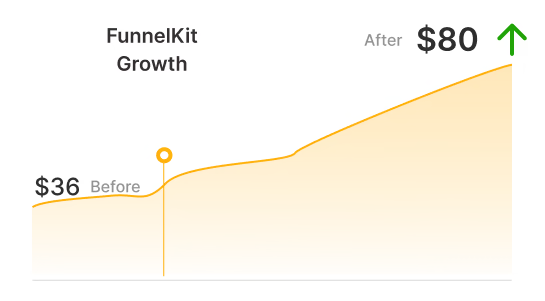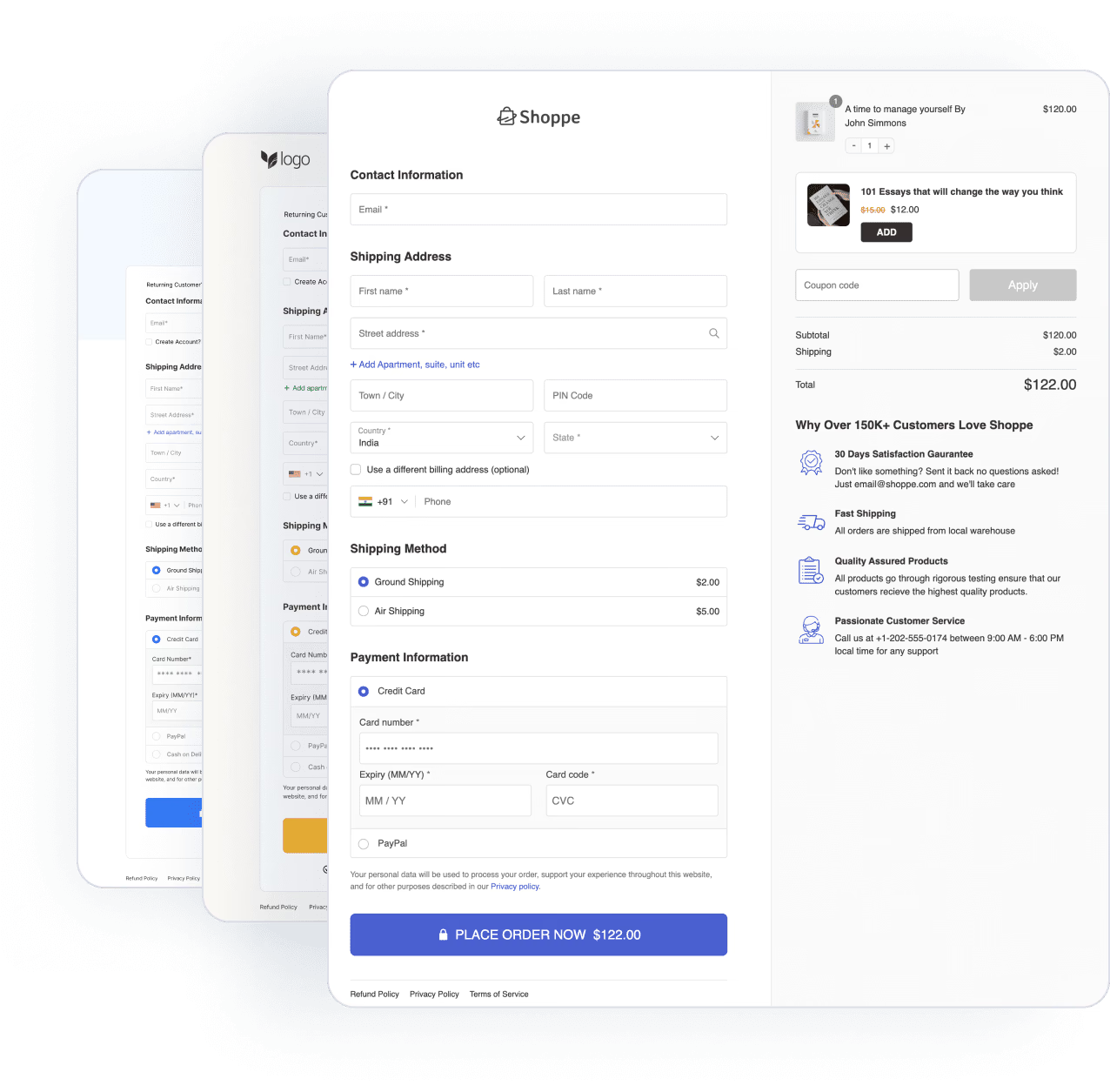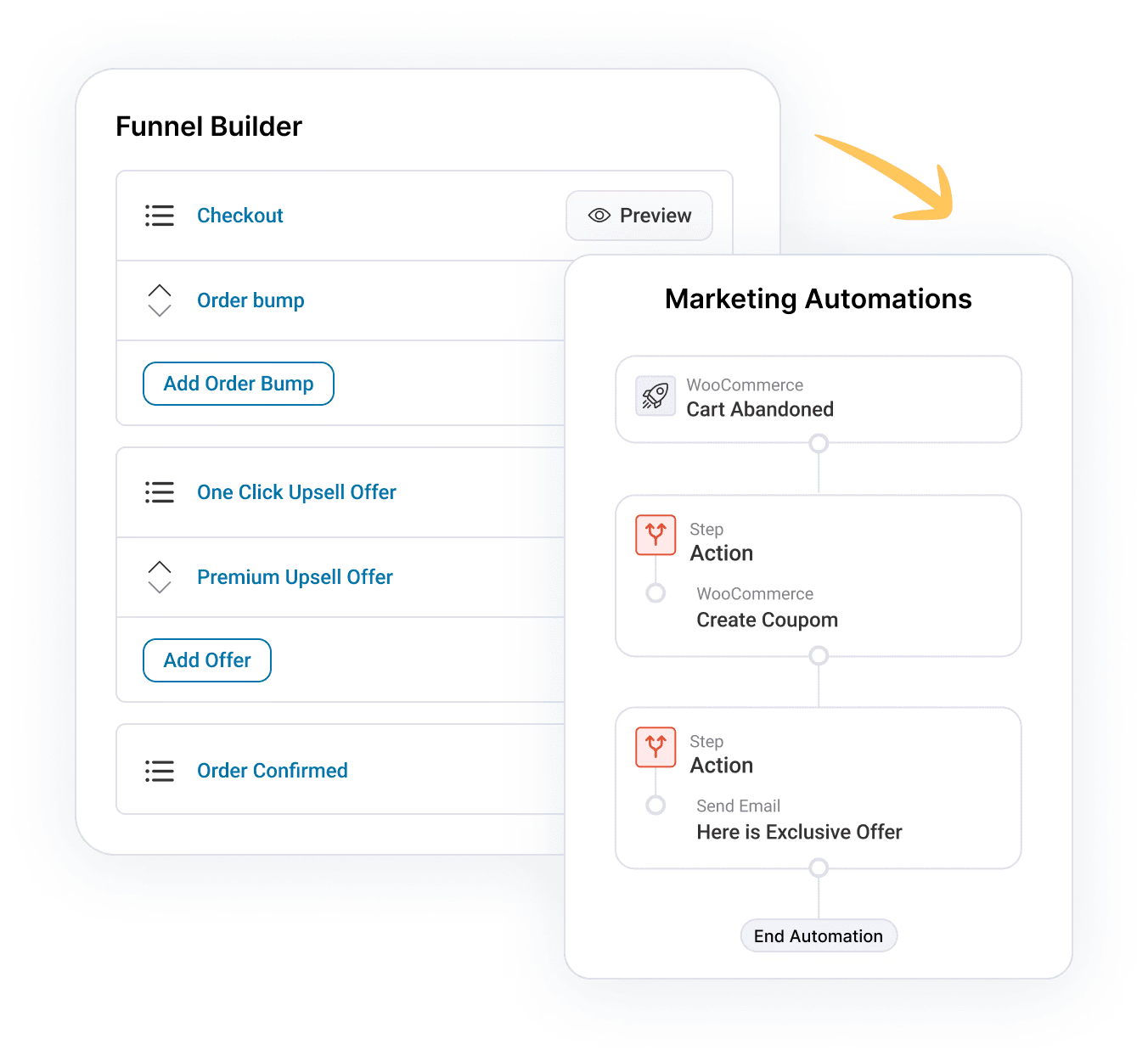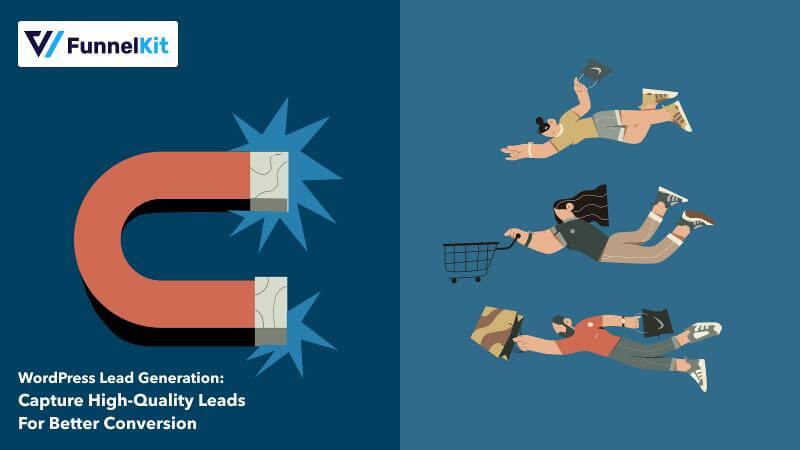
Are you looking to create an effective WordPress lead generation system that generates highly qualified leads?
Generating a consistent stream of qualified leads is the most effective way to drive sales and revenue.
That’s why a smart WordPress lead generation framework matters. It turns your website from a static brochure into a 24/7 growth engine that converts casual visitors into qualified prospects.
With the right WordPress lead generation plugin built on value exchange, you can offer something genuinely useful in return for trust and attention.
In this guide, I’ll unveil the secrets of WordPress lead generation and how you can generate leads like a pro.
Table of Contents
- 1 What is WordPress Lead Generation?
- 2 Why is WordPress Lead Generation Important?
- 3 How to Set Up Lead Generation in WordPress: A Step-by-Step Guide to Collect Quality Leads
- 4 How to Send Lead Data to Your CRM from WordPress Dashboard?
- 5 Use Marketing Automation to Nurture Your Leads and Maximize Your Conversions
- 6 Top 5 WordPress Lead Generation Plugins
- 7 4 Best Tips for Boosting Lead Generation in WordPress
- 8 Frequently Asked Questions (FAQs) On WordPress Lead Generation
- 9 What’s a good conversion rate for a lead generation page?
- 10 What’s the easiest lead magnet to create?
- 11 What’s the difference between FunnelKit Funnel Builder and tools like ActiveCampaign?
- 12 How long should my nurture sequence be?
- 13 How do I get traffic to my new funnel?
- 14 Ready to Build an Efficient WordPress Lead Generation Process with FunnelKit?
What is WordPress Lead Generation?
At its core, WordPress lead generation is the process of turning an anonymous visitor into a known contact.
I like to think of it this way: getting traffic to your site is like making eye contact in a crowded room. Generating a lead is getting their phone number, which is the first, most critical step in building a real, two-way relationship.
And it doesn’t happen by asking; it happens through a value exchange.
You offer something of high perceived value, such as a guide, a webinar, a checklist, and your visitor “pays” for it with their contact information, usually an email address.
That’s the foundation of every sales funnel.
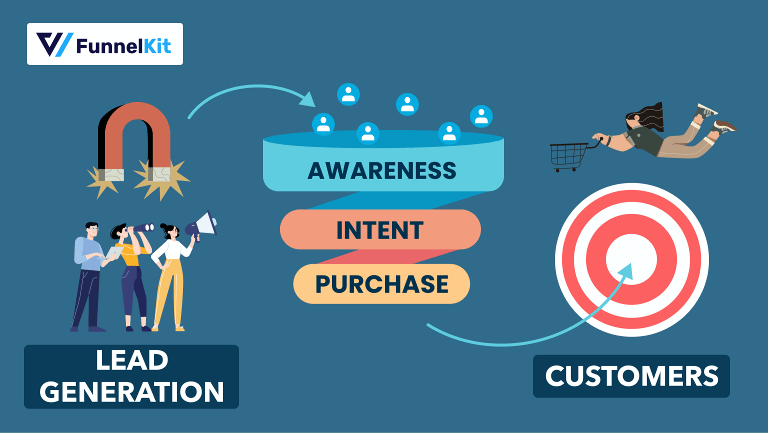
The Process: My WordPress Lead Generation ‘Digital Handshake’ Framework
From my experience, this “digital handshake” has three parts:
- The Offer (The Hook): The valuable thing that you can give is the lead magnet. It must solve a specific problem for your audience. (If you’re stuck, I’ve shared 13 powerful lead magnet ideas in a separate guide.)
- The Vehicle (The How): The mechanism you use to present the offer and collect details with an inline or pop-up optin landing page.
- The Nurture (The What Next): Automate follow-ups using a WordPress email plugin that builds trust and demonstrates your value over time.
Why is WordPress Lead Generation Important?
As a marketer, I see lead generation as the primary job of your WordPress website.
Here’s why this framework is the backbone of sustainable growth:
1. You build an asset you actually own
Your rankings? One algorithm update can wipe them out.
Your followers? You don’t own them, the platform does.
But your email list is different. It’s a direct, unfiltered line to your audience, an asset you control completely. Building it is your best insurance policy for long-term success.
2. It creates hyper-efficient, personalized marketing
Lead generation replaces “spray and pray” ads with personalized communication.
When someone downloads a specific lead magnet, they tell you what they care about. That insight lets you segment your audience and send the right message at the right time, driving better conversions and lower ad costs.
3. It builds trust that actually drives sales
A cold visitor rarely buys. They don’t know you or trust you.
The nurture process is where trust is earned. Automated emails and valuable follow-ups warm leads before the sale, which turns strangers into loyal fans.
And the data backs it up, HubSpot found that businesses that excel at lead nurturing generate 50% more sales-ready leads at 33% lower cost.
From my own experience, I can tell you that’s exactly how great funnels work.
Now that you understand what lead generation is (and why it’s the core of your marketing), let’s move to the practical part: how to build this system on WordPress using the right tools.
How to Set Up Lead Generation in WordPress: A Step-by-Step Guide to Collect Quality Leads
Here, I’ll show you how to create a lead generation funnel from the WordPress dashboard to easily collect leads.
You could piece this together using multiple plugins, such as a page builder for landing pages, a form plugin for opt-ins, and another for email integration.
But from experience, this fragmented approach creates problems: broken connections, inconsistent styling, and slow load times.
That’s why I personally use and recommend FunnelKit Funnel Builder.
It’s an integrated solution that manages your entire WordPress lead funnel from the opt-in page to checkout to automated follow-up in one place.
Step 1: Create a new opt-in funnel
First, you need to create an opt-in funnel.
For that, go to FunnelKit ⇒ Funnels and click on the “Create New Funnel” button.
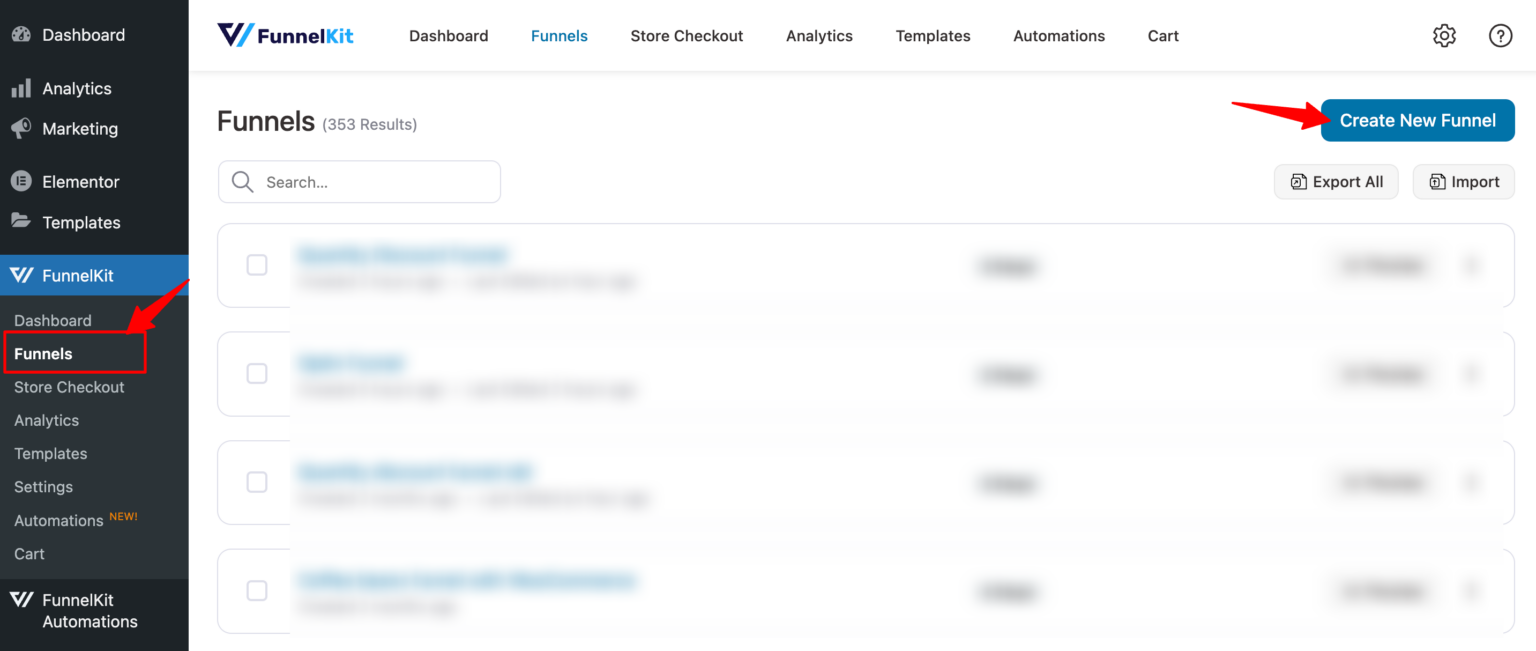
Now choose “Lead Funnels” as the type and then your favorite page builder. I’m going with Elementor here.
After that, hover over the template you like and click on the “Preview” button.
Let's select FunnelKit’s “Charmer” lead generation template. This template offers an online seminar in exchange for the contact name and email address.

With every template, FunnelKit offers two types of opt-in forms: Inline and Popup

Choose the inline option.
Now, to import this funnel, click on “Import This Funnel”, provide a name, and click on “Done”.

This will import the opt-in funnel with two steps: the opt-in landing page and confirmation page.
Step 2: Customize the WordPress lead generation landing page
Now it’s time to customize the opt-in page to reflect the offer you want to make.
For that, click on the opt-in page.

Next, hit the ‘Edit Template’ to start customizing your lead generation page.
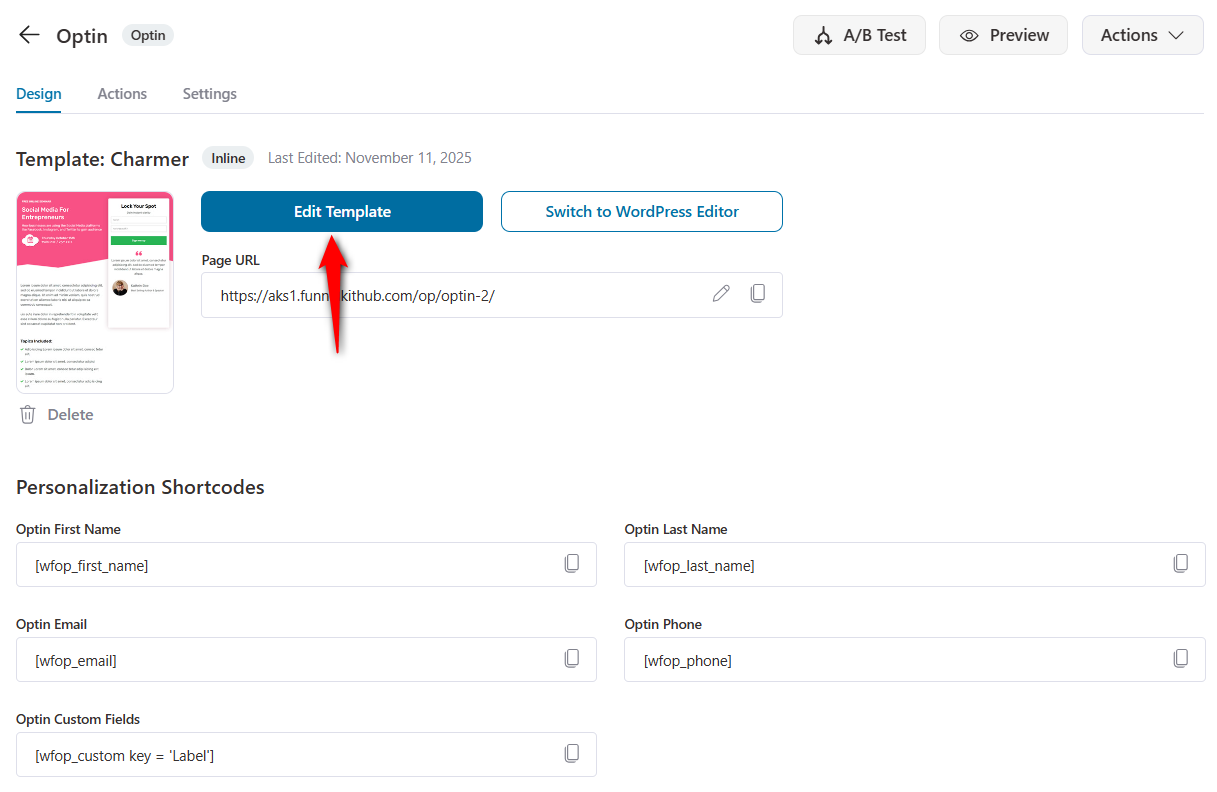
Now you can customize the content according to your needs. To customize any content, click on that element, and in the left-hand side menu, you will find customization options.
For example, you can update the logo.
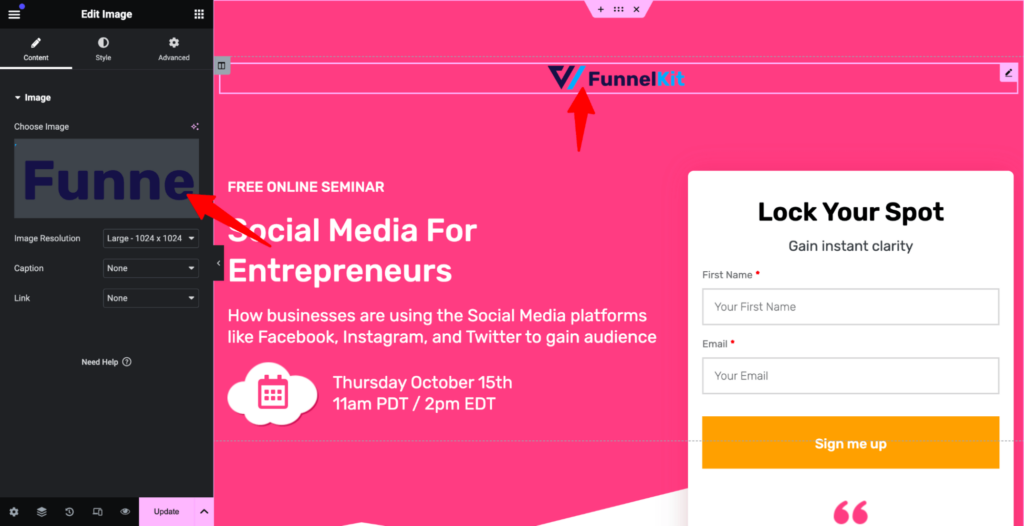
You can also change the form field width. Moreover, you can alter the CTA text, subtext, and submission text.
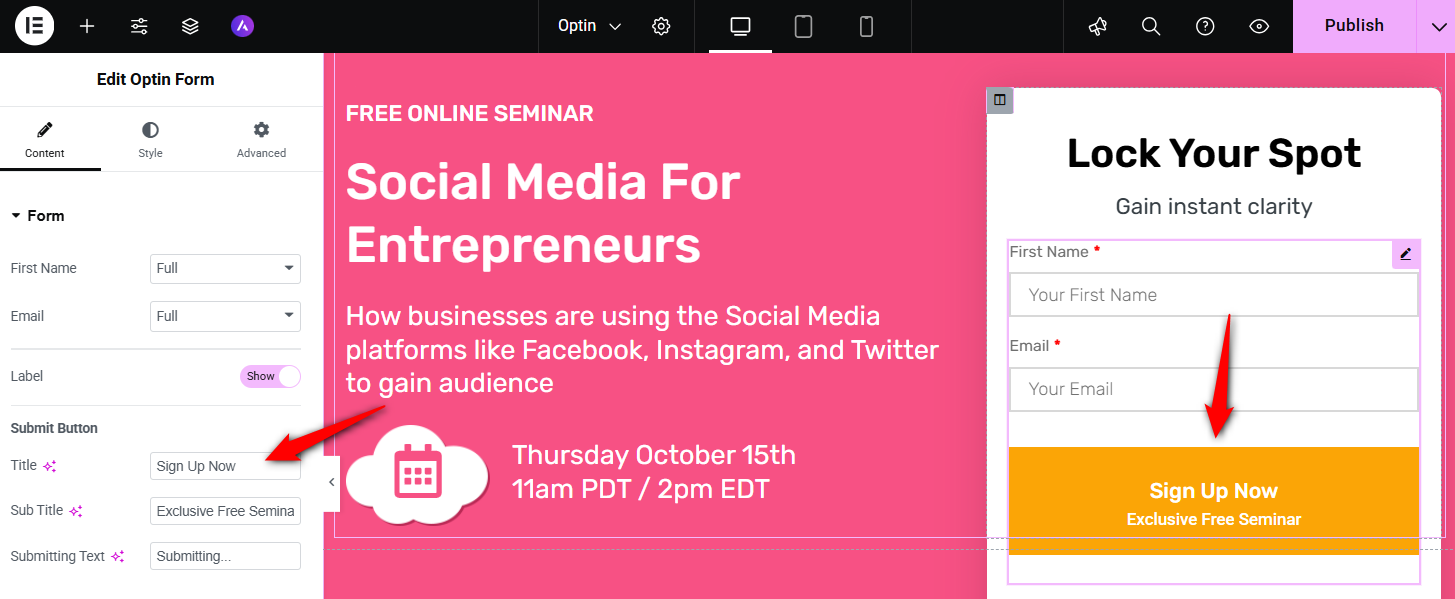
Update the content of all sections to align with your offer and brand.
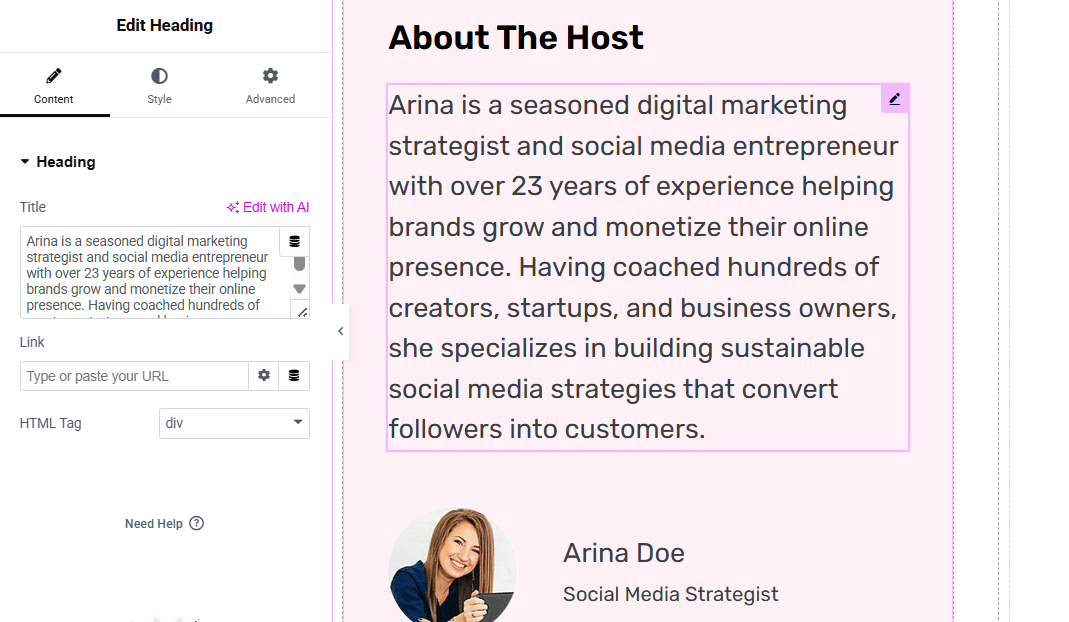
After making the changes, click “Update” to save all your changes.
Here is what your WordPress opt-in page looks like:
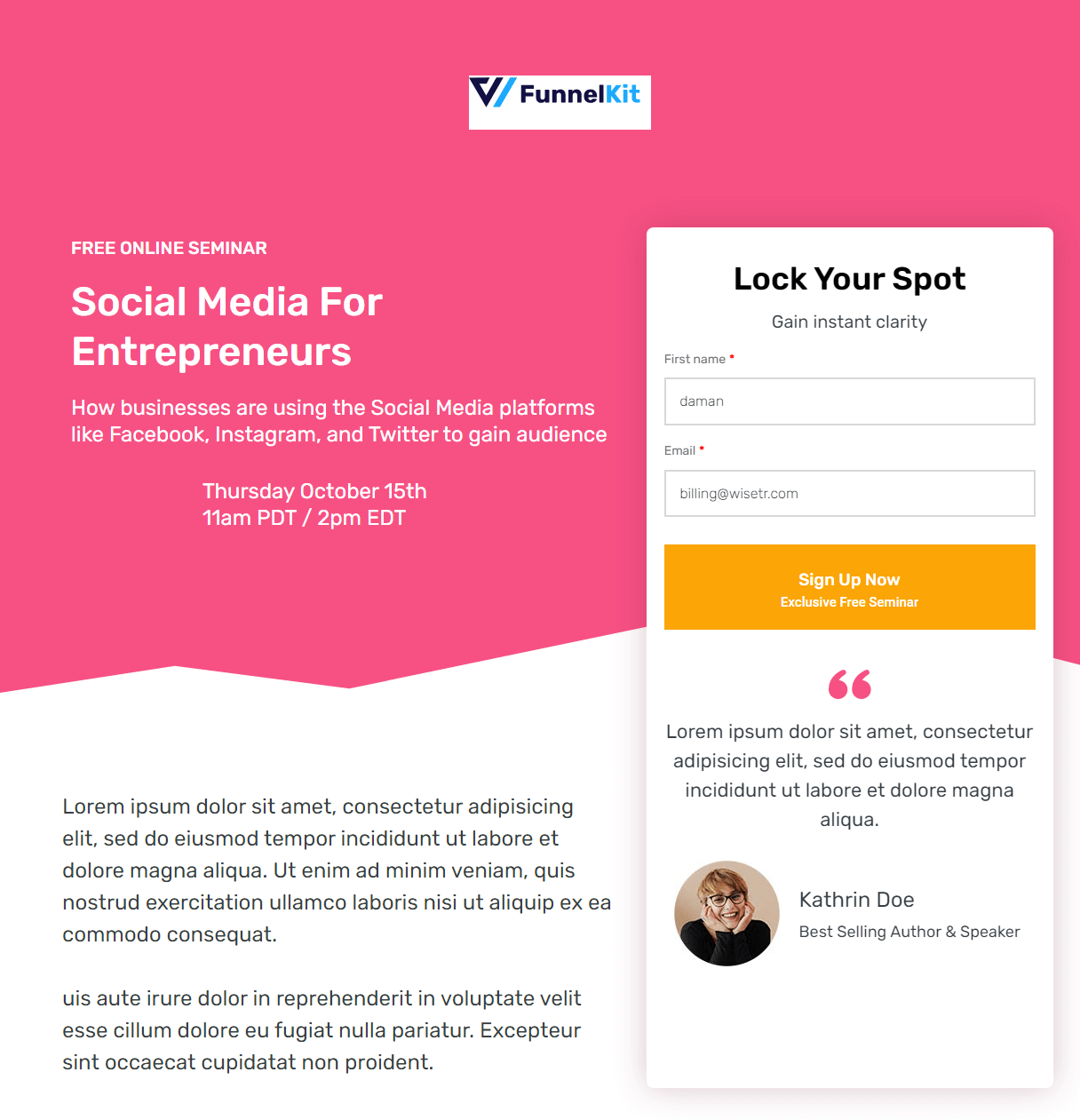
Step 3: Manage the opt-in form fields
With FunnelKit, you can easily manage how many fields you want your opt-in form to have.
The template you just chose currently has two form fields: first name and email.
Under the Design tab, drag and drop the fields you want on your lead generation page.
You can edit, rearrange, and remove the opt-in form fields to give you complete flexibility.
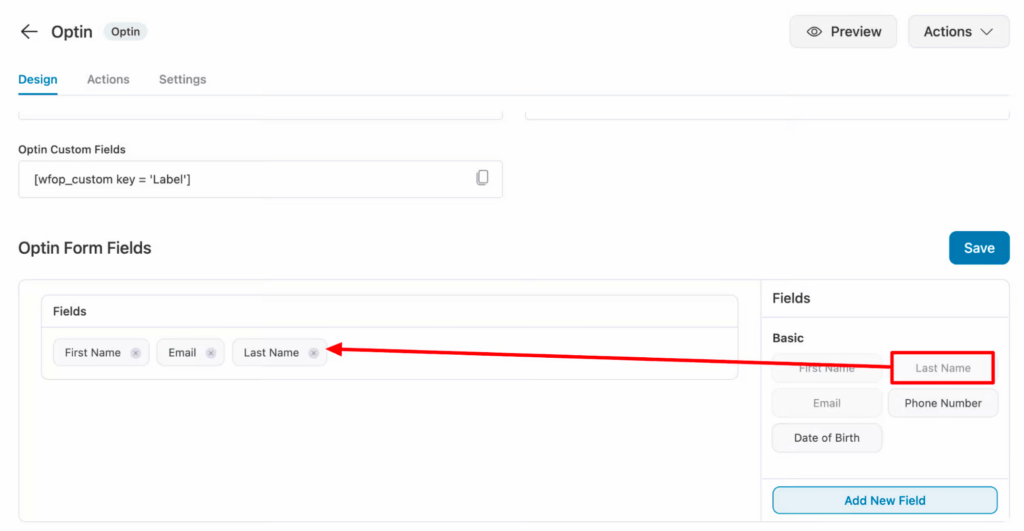
This step is optional, but I included it so you can add more fields as needed.
Step 4: Enable email notification with lead magnet
You can send a confirmation email to your subscriber using FunnelKit whenever a user fills out and submits the form.
For that, move to the Actions Tab. Here, select “Yes” for the Lead Notification option. After that, you can customize the email subject and body.
To personalize the email body, use the shortcodes listed under the “Body” option.
You can also enable Admin notification if you want.
After making the changes, make sure to hit “Save Changes” to update.
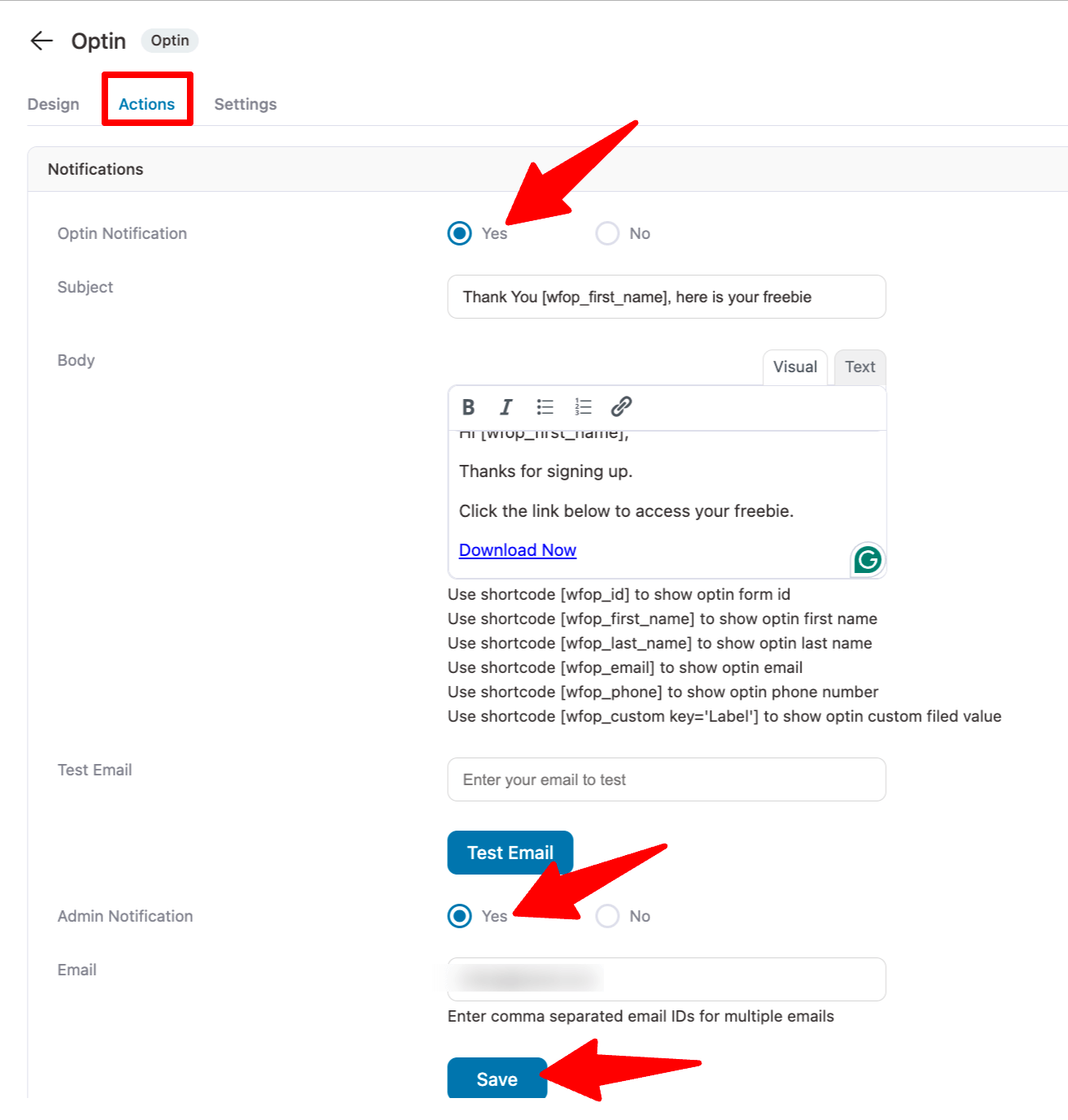
Don’t forget to interact with your newly generated lead and send the downloadable link to their freebie.
Step 5: Customize the opt-in confirmation page
Just like you customized your opt-in page, you can also customize the opt-in confirmation page.
For that, again, go to the “Edit Template” option to edit the page with your favorite page builder.
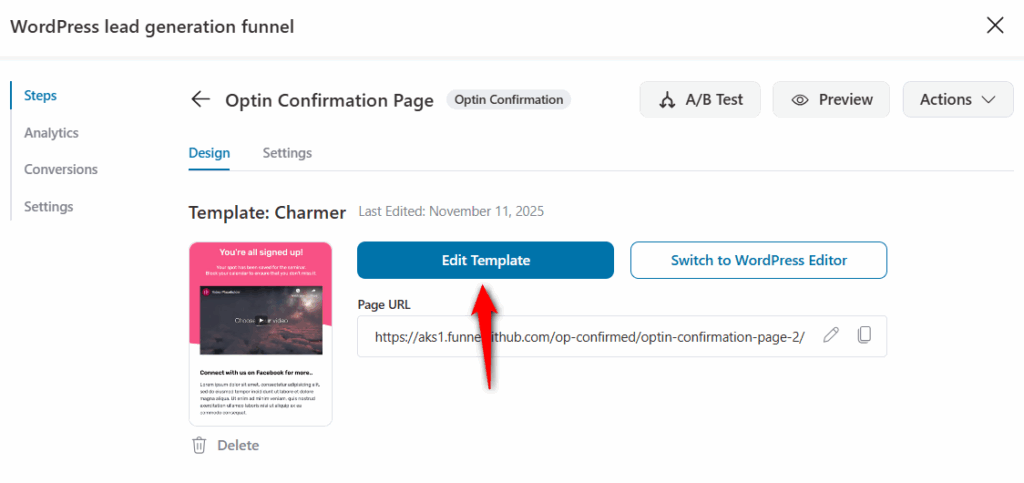
Here is what the opt-in confirmation page looks like:

And that’s it. Your WordPress lead generation funnel is ready!
How to Send Lead Data to Your CRM from WordPress Dashboard?
This is where real marketers separate themselves from amateurs.
A visitor who fills out your form isn’t just a “lead”, they’re a warm prospect. You need an automated CRM connection ready to engage them instantly.
Step 1: Enable CRM integration
To do the necessary settings, edit the opt-in page and go to the Actions tab.
After that, expand the CRM tab and choose “Yes” for the CRM Integration option.
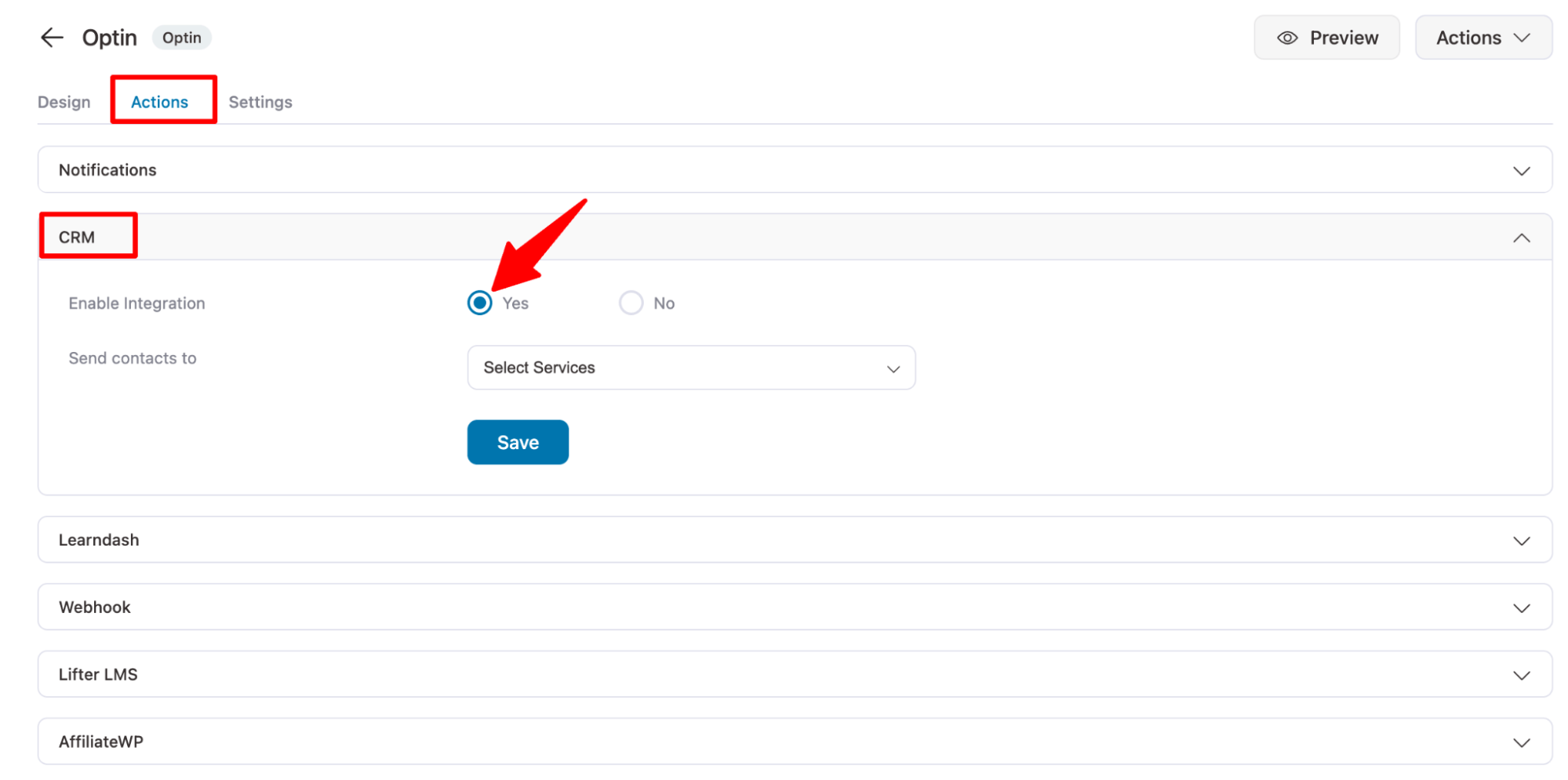
Step 2: Choose the CRM for integration
Now, choose the CRM you want to send a contact to from the dropdown.
Let’s select ActiveCampaign here.
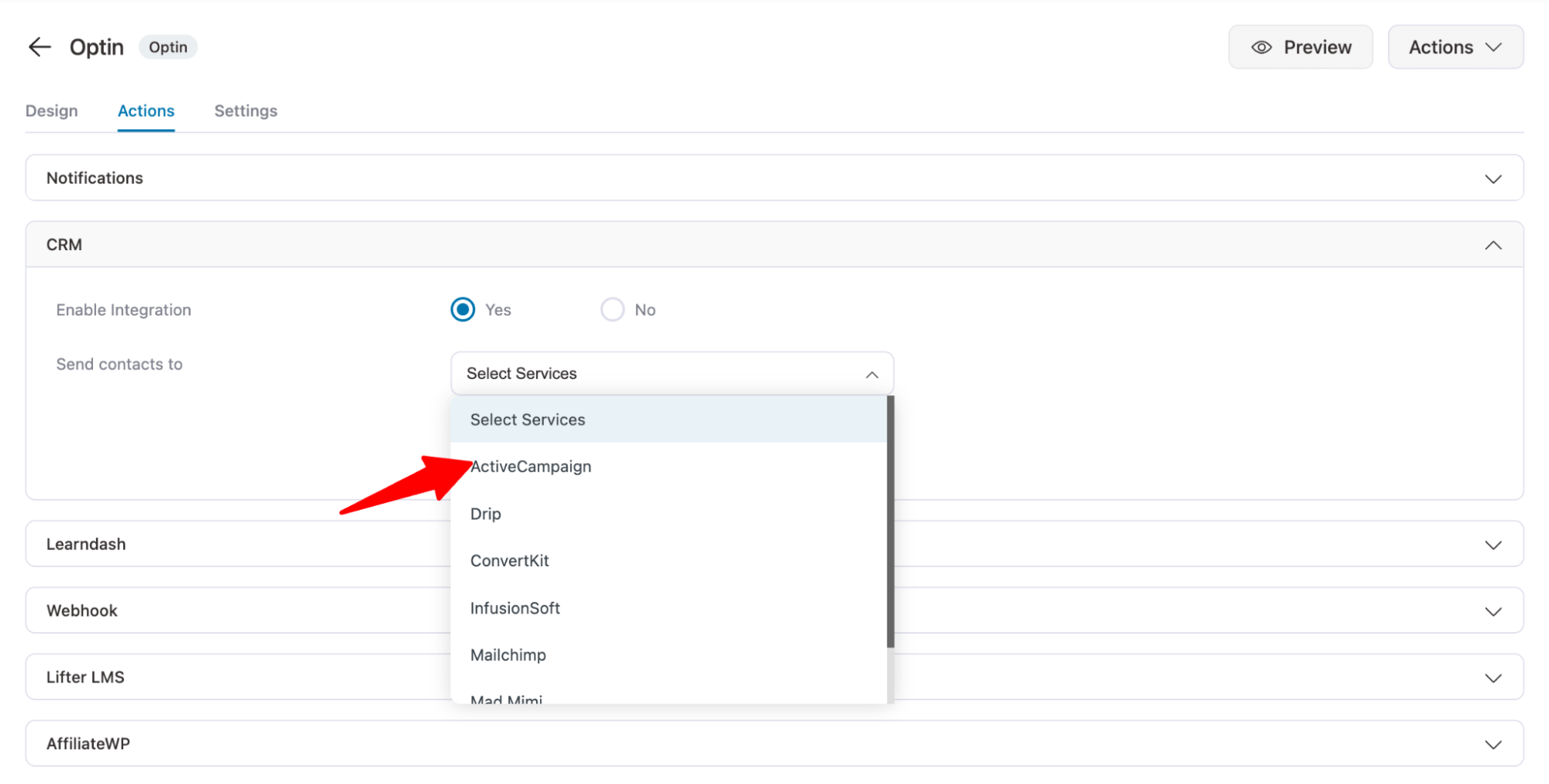
Step 3: Enter the form code
Now, you need to create a form in your CRM with the same fields you used in your opt-in form.
Then copy the form code and paste it here. After that, click on “Continue”.
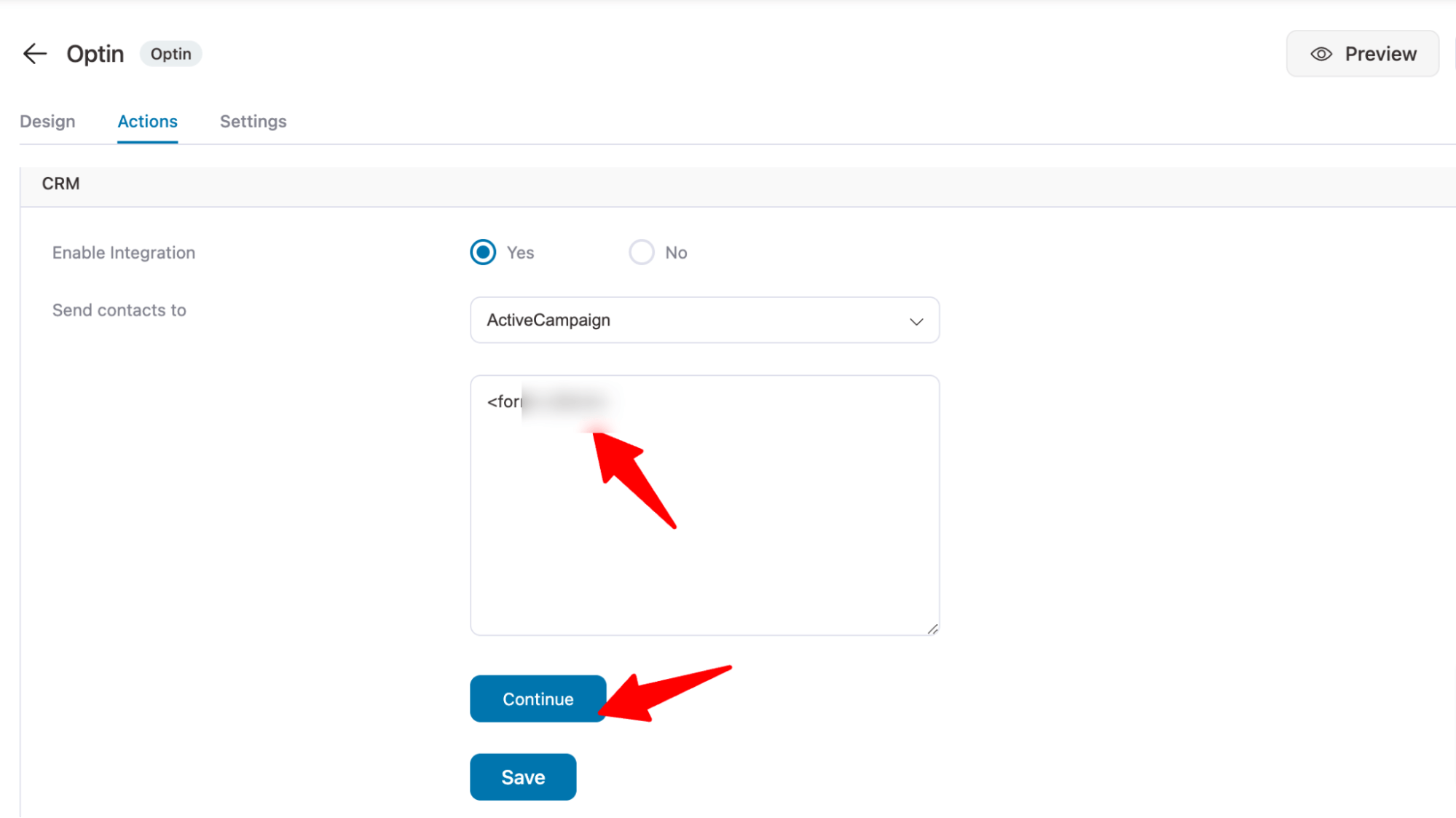
Step 4: Map the opt-in form fields
Map your ActiveCampaign fields against the FunnelKit opt-in form fields. Here both our forms have two fields - first name and email.
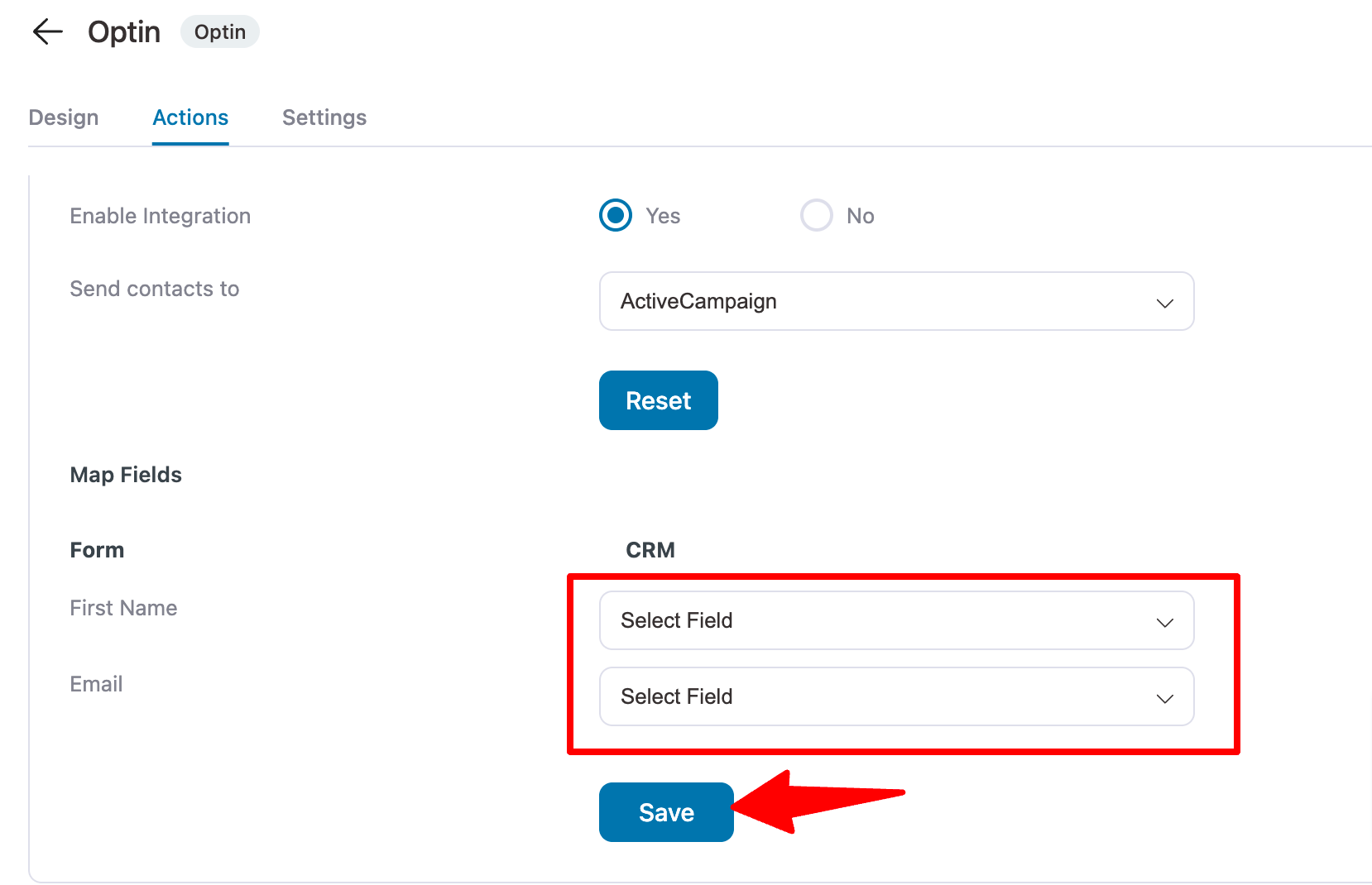
Once done, click on Save.
Well done! You’ve successfully configured your CRM to receive leads from your WordPress funnel.
Use Marketing Automation to Nurture Your Leads and Maximize Your Conversions
The main aim of collecting leads is to nurture them to become paying customers.
It involves building and maintaining relationships with your leads over time to guide them through the buyer’s journey, cultivate trust, and increase the likelihood of conversion.
You can send them a series of email drip campaigns to interact with them and engage them.
Here are some of the ways you can nurture your leads:
- Welcome emails: You can send them a series of welcome emails introducing your brand, products, and values.
- Educational content: Share content that addresses your leads' pain points. You can share blog posts, video tutorials, etc.
- Case studies: You can also share successful case studies and testimonials that will develop a lead’s trust in your brand.
- Offer discounts: Offer them special, limited-time discounts to encourage them to make a purchase.
You can use all these email types with FunnelKit Automations. This tool lets you send automated emails to your leads, nurturing them without much manual work.
In the next section, we will talk about some of the best WordPress lead-generation plugins.
Top 5 WordPress Lead Generation Plugins
Here are the 5 most popular WordPress lead generation plugins, ranked by features and value for money.
1. FunnelKit Funnel Builder
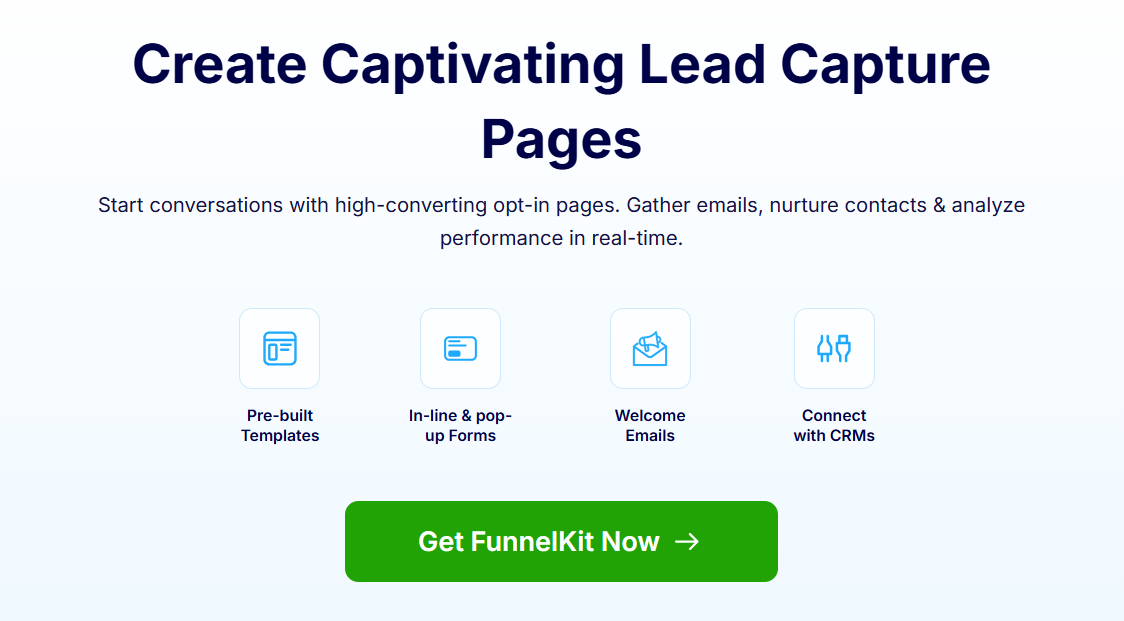
FunnelKit is the best-rated WordPress lead generation plugin with multiple prebuilt templates to make the lead generation process super easy. This is WordPress's ultimate sales funnel builder, letting you generate leads and turn them into customers.
Here are the key features of FunnelKit:
- Prebuilt lead generation template: FunnelKit has multiple ready-to-use templates that you can import and use in a few clicks. You can even build your lead generation funnel from scratch.
- Two types of opt-in forms: FunnelKit gives you two types of opt-in forms - an inline and a pop-up form. All you need to do is just drag and drop. You can add custom fields to your opt-in form as well.
- Deep Integration with popular page builders: This WordPress lead generation plugin deeply integrates with popular page builders such as Elementor, Divi, Gutenberg, Oxygen, etc.
- Customer insights: Get customer insights in real-time with information related to their names, details, total spends, orders placed, etc.
- Analytics: The analytics dashboard provides key metrics, including visits, contacts, revenue, and conversion rate.
- A/B testing: With FunnelKit, you can A/B test different pages of your lead generation funnel to find out what works for your audience.
- CRM integration: FunnelKit integrates with popular CRMs such as ActiveCampaign, Drip, ConvertKit, InfusionSoft, and MailChimp.
Price: FunnelKit offers a free version. The pro version starts at $99.50/year.
2. OptinMonster
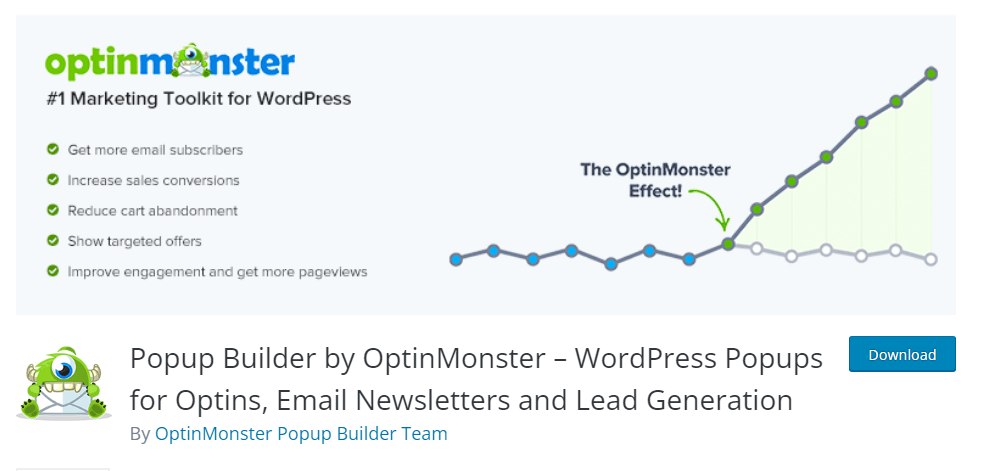
OptinMonster is a powerful lead generation plugin for WordPress. With this tool, you can create beautiful pop-up forms just by drag and drop. Here are the key features of the plugin for WordPress lead generation:
- Popup maker: With this tool, you can create beautiful popup campaigns, email subscription forms, sticky announcement bars, opt-in forms, countdown timers, etc, without knowing any coding.
- Exit Intent popup: This tool uses an exit intent technology and can show a popup at the exact moment when someone is about to leave your site to collect leads.
- Page-level targeting: You can show your customers different opt-in forms based on the page they are on. This customization option helps you collect leads more effectively.
- Prebuilt popup templates: Along with giving you the option to create pop up from scratch, this tool also provides you with prebuilt popup templates.
- A/B testing: OptinMonster includes a reliable A/B split-testing feature. After A/B testing, it provides accurate analytics so you know what resonates with your customer.
Price: The WordPress lead generation plugin has a free version. The pro version starts at $7/month when billed annually.
3. WPForms

WPForms is one of the most popular form builders for WordPress, allowing you to create beautiful contact, subscription, feedback, and many other types of forms. Here are some of the key features:
- Prebuilt works: This beginner-friendly pop-up builder comes with many pre-built templates and workflows to make users' lives super easy.
- Drag and drop form builder: This WordPress plugin offers a smooth drag-and-drop form builder that you can use to build your forms from scratch.
- Range of form fields: WPForms offers a variety of form fields, such as star ratings, file upload, multi-page form, etc., so you can create the form you want.
- Spam Protection: WPForms comes with built-in safeguards against spam. It also offers seamless connections to Google reCAPTCHA and Cloudflare Turnstile.
- 3rd-party integrations: WPForms integrates with HubSpot, MailerLite, Drip, ActiveCampaign, Zapier, etc.
Price: The free version is available on WordPress.org. The pro version starts at $49.50/yearly.
4. MonsterInsights
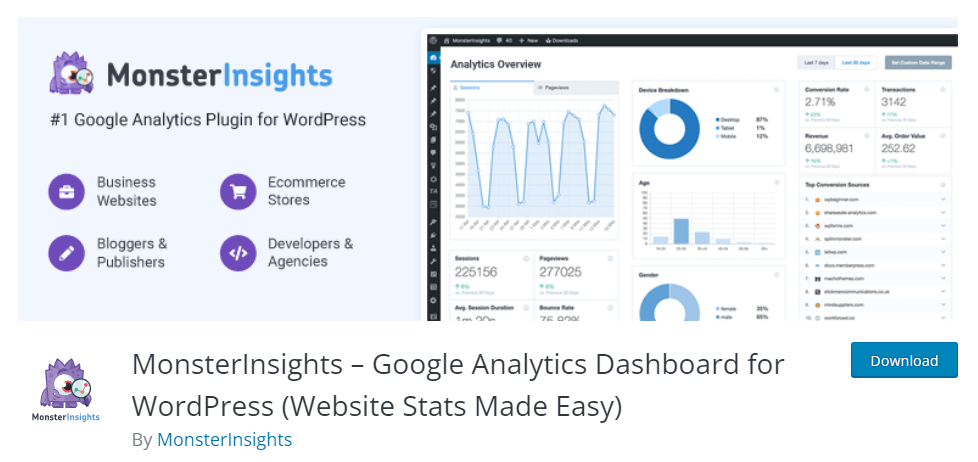
MonsterInsights is the most popular Google Analytics plugin for WordPress, letting you track how your lead generation campaign is performing. Here are the key features of this plugin
- Track file download: A useful feature of MonsterInsights is the report for tracking file downloads. This functionality enables effortless monitoring of how lead magnets, such as ebooks, are performing.
- Analytics: Using this WordPress lead generation plugin, you can readily identify which assets are most downloaded and which require further attention to enhance their performance.
- WooCommerce stores and ensuring GDPR compliance: MonsterInsights offers modules designed for tracking WooCommerce stores and ensuring GDPR compliance.
- Forms report: The Forms Report provides you with conversion statistics for different contact forms and lead forms on your website. This data enables you to enhance your conversion rates and drive business growth.
Price: A free version is available. The pro version starts at $99.50/year.
5. Popup Maker
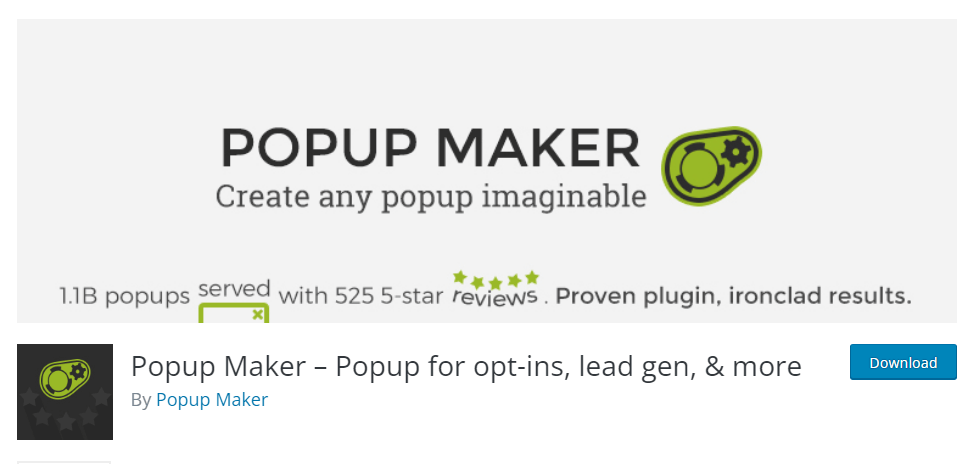
Popup Maker is another great plugin for creating popups in order to collect leads on your WordPress site. You can create conversion-focused campaigns to grow your revenue and email list. Here are the key features:
- Popup forms: You can create different types of pop-up forms using this plugin, such as Email opt-in popups, Content upgrade popups, Lead generation popups, Contact form popups, etc.
- Multiple Popup Triggers: A popup can trigger automatically when a user clicks on a button, submits a form, etc.
- Exit intent popup: You can show your user a pop-up form right before they are about to leave your website.
- Integration with popular form plugins: Popup maker integrated with popular form plugins such as Ninja Forms, Gravity Forms, Contact Form 7, Caldera Forms
- WPForms, and many more.
Price: Free version available. The premium version starts at $59/year.
4 Best Tips for Boosting Lead Generation in WordPress
Building your funnel is only the first step. The real gains come from its optimization.
Over the years, I’ve seen clients make the same simple mistakes that quietly cost them dozens (or hundreds) of leads.
Here are four practical, high-impact tips I share with every client to strengthen their WordPress lead generation strategy.
1. Stop using generic sidebar forms. Start using “Content Upgrades”
This is, hands down, the most powerful tactic I’ve implemented.
A content upgrade is a lead magnet that’s hyper-specific to the blog post your reader is already engaging with.
A generic “Subscribe to Our Newsletter” box in your sidebar is low-converting (it often converts below 0.5%).
In my experience, a contextual, next-step offer converts like crazy even beyond 20%.
If you’re serious about WordPress lead generation, stop thinking “newsletter”. Start thinking about contextual value exchange.
2. A/B test your headline
Marketers love debating about CTA button colors.
But the truth is that your headline is 100x more important than your button color.
Your headline is your value proposition, which determines whether someone stays or bounces from your lead generation page.
Before testing anything else, test your promise.
Use a builder with built-in A/B testing (like FunnelKit) and try this:
- Version A (Feature-Focused): Download Our Free Ebook on Social Media
- Version B (Outcome-Focused): Get 100 New Followers This Week With Our 5-Step Social Media Framework
I’ll put my money on Version B every single time. Your promise will move your growth needle.
3. Follow the “5-second, 2-field” rule to reduce friction
Friction is the silent killer of conversions. If your landing page is confusing, cluttered, or slow, you’ll lose the lead.
The 5-Second Rule says that a visitor should know exactly what you offer and exactly how to get it without scrolling within 5 seconds of landing on your page.
For that, keep your headline, value, and CTA above the fold.
The 2-Field Rule says that there should not be more than the first name and email field. Extra fields add friction and lower it.
Follow these two rules, and your opt-in rates will thank you.
4. Don’t let page speed steal your leads
This one’s technical, but it has a massive marketing impact.
You can have the perfect offer, the best copy, and still lose half your traffic if your page takes more than 5 seconds to load.
So before launching any WordPress lead generation funnel, make sure to use a lightweight, fast WordPress theme, install a reliable caching plugin and optimize your images and scripts.
A fast site isn’t just a good SEO practice, it’s conversion insurance.
Frequently Asked Questions (FAQs) On WordPress Lead Generation
What’s a good conversion rate for a lead generation page?
A good conversion rate for a lead generation page depends on your offer and traffic. For generic forms, it’s about 1-2%. For landing pages, it’s about 5-10% and for content upgrades, it’s about 15-20%. If your opt-in page conversion rate is below 5%, start by testing your headline.
What’s the easiest lead magnet to create?
A simple one-page checklist or cheat sheet is the easiest lead magnet to create. It’s fast to make, easy to read, and converts great. Skip the long ebooks because people want quick wins.
What’s the difference between FunnelKit Funnel Builder and tools like ActiveCampaign?
Email tools (like ActiveCampaign) store and send emails. FunnelKit Funnel Builder builds the WordPress funnels, landing pages, checkouts, order bumps, one-click upsells, and more. With opt-in pages, you can collect leads and automate the follow-up, too.
How long should my nurture sequence be?
Start with a 4-email sequence: Deliver, Value-Add, Proof, Pivot. Then, keep nurturing through your main list with weekly tips or updates.
How do I get traffic to my new funnel?
You can get traffic to your new funnel by adding your lead magnet to top blog posts, linking your landing page in social media posts, and including it in your email signature.
Even small tweaks like these can drive consistent, qualified traffic.
Ready to Build an Efficient WordPress Lead Generation Process with FunnelKit?
Lead generation can help you achieve maximum conversions with minimal effort by providing quality leads.
Nurturing leads who have actively demonstrated interest in your product or service is more likely to result in conversions than nurturing leads who have not shown any interest.
To help you get the best results when it comes to generating and capturing leads, you need an advanced WordPress lead generation plugin like FunnelKit.
This WordPress lead generation plugin empowers you to create effective opt-in funnels with captivating landing pages and custom forms.
Moreover, FunnelKit offers the advantage of A/B testing your Opt-in funnel pages, providing concise analytics to streamline the process.
So what are you waiting for? Kickstart your WordPress lead generation journey with the capabilities of FunnelKit!
Editorial Team
December 12, 2025Do you want to create an Opt-in page on WordPress that converts more visitors into leads? Most visitors leave your site without buying. In fact, data shows that 76% of...

Editorial Team
December 11, 2025The default WooCommerce checkout page works, but “working” isn’t enough if you want higher conversions and more revenue. After auditing hundreds of WooCommerce stores over the years, we’ve found that...

Editorial Team
November 27, 2025The default WooCommerce thank you page does the bare minimum. It confirms an order, and that’s it. But it has the potential to do so much more for your business....

